Everything started around 8 years ago while I was studying embedded systems at the University of Oulu in Finland.
At that time, I noticed there were no embedded electronics websites targeted for makers, students and developers in Finland. I wanted to explore this new and interesting niche more.
I was used to running websites and also liked to create content for them. An embedded electronics site could be a new hobby and it would also help me to gain some new electronics skills.
So I decided to create one.
The site became a well-known portal among the Finnish electronics enthusiasts. There were a large number of hobby projects created and published on the site.
Ruuvi’s first large-scale open-source community-driven project was RuuviTracker. An open-source GPS/GLONASS/GSM tracking device.
The RuuviTracker project was launched at the end of year 2011.
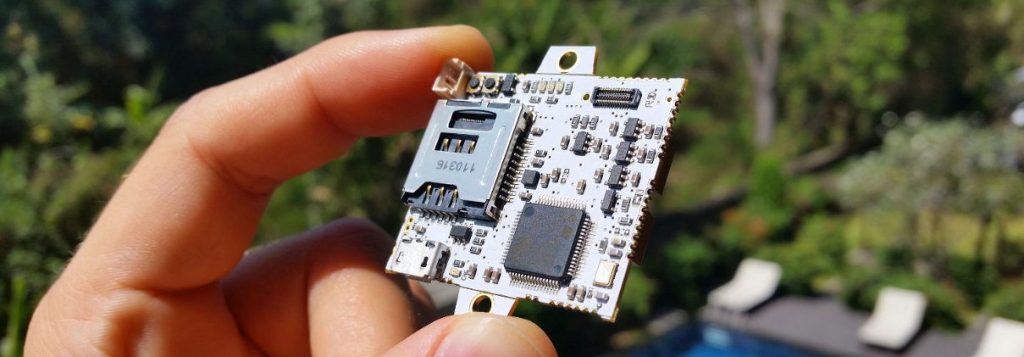
A few years ago, buzzwords like IoT (Internet of Things) and Bluetooth Low Energy beacons became hot topics in the technology industry. Startups and large companies around the world have acknowledged they needed to get in on the action and to do it sooner rather than later.
In 2014–2015 some proximity beacon products were available on the market but they seemed to be kind of boring to me. Their features were limited and I wanted something that could do more.
In February 2015 I got an idea.
– How cool would it be to create a unique-looking sensor beacon? And of course, to release all of its sources to the public because seems that no one else is willing to do that (!)
It could even harvest its energy from the surrounding environment!
The next few weeks and months were extremely productive.
I woke up early, started to design and soon noticed it was already a midnight.
The project quickly gained some great publicity in the IoT Bluetooth scene and that clearly proved that there was a great demand for an open-source device like this.
The project quickly moved forward and in cooperation with Offcode, my previous employer, we produced prototypes and created a firmware.

In June 2015, I received an interesting email from a Norwegian semiconductor manufacturer, Nordic Semiconductor.
They discovered RuuviTag and reached out to us to ask if we would like to start a cooperation with them.
This proposal arrived at the perfect time because during the firmware development, we noticed that Dialog’s software development tools weren’t polished and we also didn’t see eye to eye with their SDK’s (Software Development Kit) licensing policies.
We found that Nordic Semiconductor didn’t have this problem so it was the perfect fit.
Even back then they were more interested in the open-source industry compared to other chip manufacturers. Many of their development tools were open and their SDK’s code examples compiled nicely with GCC.
Also, their upcoming nRF52 sounded almost too good to be true.
The decision didn’t take long.

I decided to go all in and design a new RuuviTag.
To make it more powerful, more cost-efficient to manufacture and easier to hack, I ended up enlarging the device’s diameter from 30mm to 45mm.
A larger device footprint was definitely the right decision.
Now it was possible to use a battery that was up to 5 times greater capacity, create a more efficient radio antenna and also include an NFC coil.
Also I finally managed to create the perfect working battery holder mechanism I had envisioned at the very beginning of the project.
The new RuuviTag was born.

Now, the technology has been proven to work and there was clearly a high demand for RuuviTags.
Upgrading to the Nordic’s latest chip boosted the demand even higher.
We continuously received inquiries asking when and where to they can be bought.

As a startup company without investments, however, we preferred to have preorders in before pursuing mass production.
Crowdfunding? Maybe. I had considered that from the beginning of the project but I knew how hard it would be and I hesitated. But damn it, let’s do it anyways. No pain, no gain etc.
In the beginning of 2016 it was clear: we’ll run a Kickstarter campaign.
Like anyone can imagine, the campaign was a lot of hard work.
Right before the campaign work started, Henri joined the core team. His contribution to the whole campaign was a tremendous help. I really appreciated it.
Also Otso joined to help with the campaign work and so did Sini-Maaria, who had contributed occasionally for the past few years.
We launched the campaign on 27th of June 2016 and it got 100% funded in 4 hours.
During the campaign, we set (and reached) several stretch goals. Meaning, the device gained new features like certifications, a waterproof enclosure, extended operating temperature battery and so on.
All this increased our workload but was definitely worth the effort for the future of RuuviTag.
All of the enhancements pushed the device into something more interesting. In the end we finally were able to say it’s a complete product, not just a development board for hackers.
I’m (still) relieved to say that in the beginning of April 2017, all the rewards were finally shipped to the backers. Late, but happily shipped.
If you were a backer, we want to thank you for your patience and believing in the project.

After the campaign, we haven’t slowed down.
Instead, we have worked extremely hard finding the best suppliers and partners available to mass produce the device.
From July 2017, RuuviTag has been officially available for order.
Now, our team is more ambitious than ever and we’ve got big plans and projects in the pipeline.
We’ll keep you posted.
Would you like to have one?
Ruuvi is an easy way to measure environment at your home, hobbies or business. Order now and get hooked with measuring!
RuuviTag Sensor (4in1)
39,90€
Ruuvi is based in Finland. If you’re an EU consumer, VAT is included. If you’re a non-EU customer, you don't pay VAT. If you're an EU business, insert your VAT ID at checkout.
In stock
RuuviTag Sensor (4in1)
| 5 star | 92% | |
| 4 star | 8% | |
| 3 star | 0% | |
| 2 star | 0% | |
| 1 star | 0% |
RuuviTag Sensor (4in1)
| Quantity | Unit Price(€) |
|---|---|
| 1 | 39,90 |
| 2 | 37,40 |
| 3-5 | 36,90 |
| 6-8 | 35,90 |
| 9-12 | 34,90 |
| 13-25 | 33,90 |
| 26-99 | 32,90 |
Are you looking for bigger quantities? Contact us for pricing.
Made in Europe, Finland. Worldwide free shipping on orders over 120€.
RuuviTag is a Bluetooth sensor that monitors environmental conditions and sends the data directly to your mobile device. The Ruuvi Station mobile app allows you to view real-time accurate measurements and historical graphs. The app also provides customisable alerts to notify you of critical conditions, such as a melting freezer, excessively high bedroom temperatures that could disrupt sleep, or elevated humidity levels in your basement.
Onboard Sensors (4-in-1)
Temperature: °C, °F, K; typical accuracy ±0,2 °C @ 5-60 °C (±0.36 °F @ 41-140 °F).
Air humidity: RH-%, g/m3, dew point; typical accuracy ±3 RH-% @ 20…80 %. Range: 0-95 %.
Air pressure: Pa, hPa, mmHg, inHg; typical accuracy ±1 hPa. Range: 500-1155 hPa.
Motion: Movement counter. Counter is incremented when acceleration exceeds the threshold on any axis.
Operational Conditions
Operating temperature (with stock battery): -20 °C to +70 °C (-4 °F to 158 °F).
Absolute maximum operating temperature: -40 °C to +85 °C (-40 °F to +185 °F).
Housing: IP67, splash-proof, non-condensing location.
Battery: User-replaceable CR2477 (included). Supports extended operating temperature range battery CR2477T.
Battery lifespan: Estimated 12 to 24 months.
Certifications: CE, FCC, ISED, TELEC, IFETEL, NOM, RTCA DO-160 category H, RoHS, IC, HVIN, IMDA, OFCA, ICASA, POTRAZ.
Bluetooth range: 5-20 meters (indoor), 20-100 meters (outdoor). The sensitivity of the receiving mobile device’s antenna, obstacles and wall materials affect the range. For increased range, use the Ruuvi Gateway router as a receiver.
App Features
Free and easy: User-friendly free app, signing in is optional.
Platforms: Android and iOS.
Alerts: Configurable Bluetooth push alerts with customisable messages.
Real-time measurements: Track data in real time.
Historical data: Detailed historical graphs available for up to 10 days (offline).
History export: 10-day history export.
Dashboard: See all your sensors at a glance.
Personalise sensors: Use custom backgrounds and names.
Multilingual: Available in English, Finnish, Swedish, French, and German.
Compatibility
Integrations: Victron Energy, Home Assistant, Homey, and more.
Remote monitoring: When not within Bluetooth range, online remote monitoring is available with the Ruuvi Gateway and Ruuvi Cloud, both sold separately.
Technical Specifications
Data sheet: Download (pdf)
Read more info below:
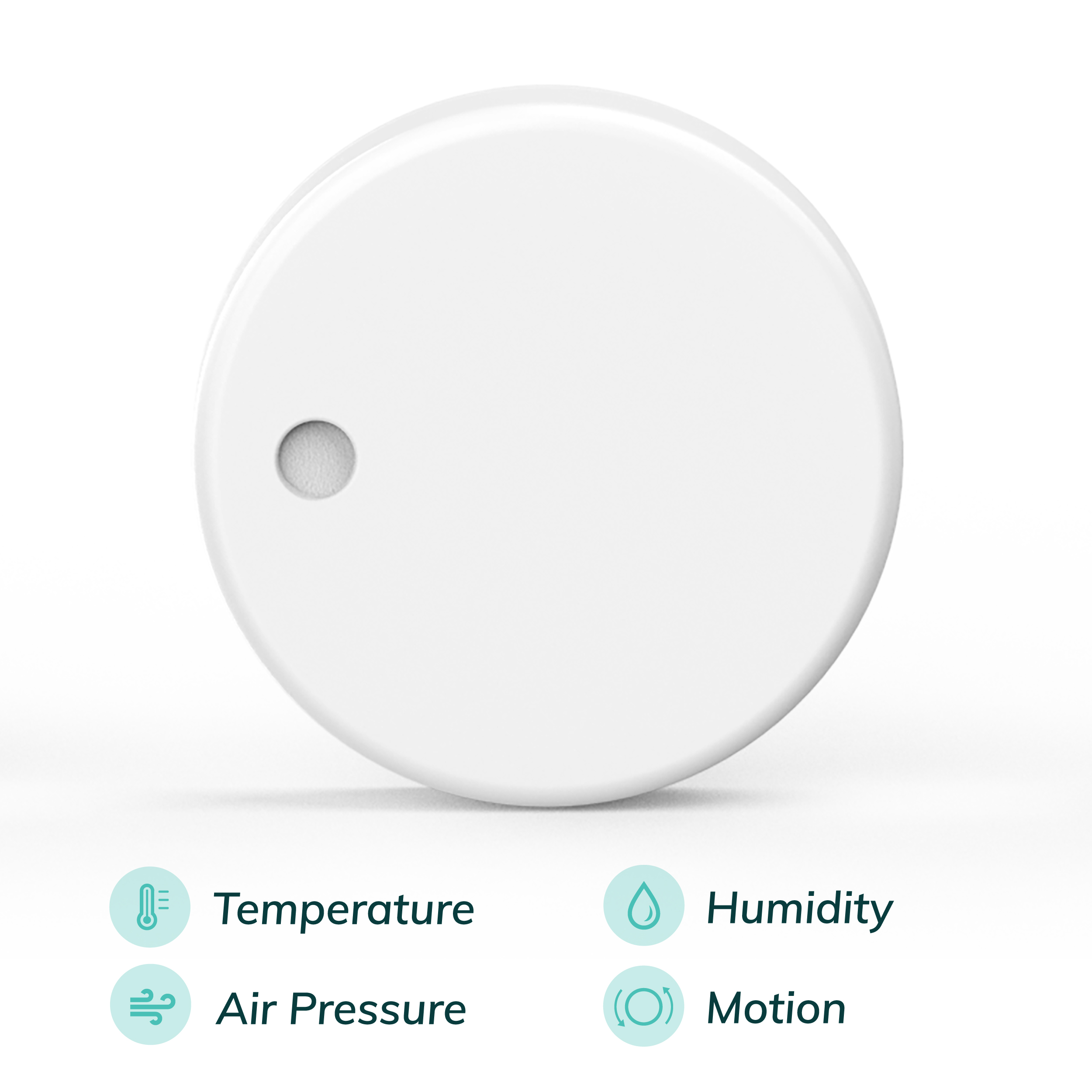
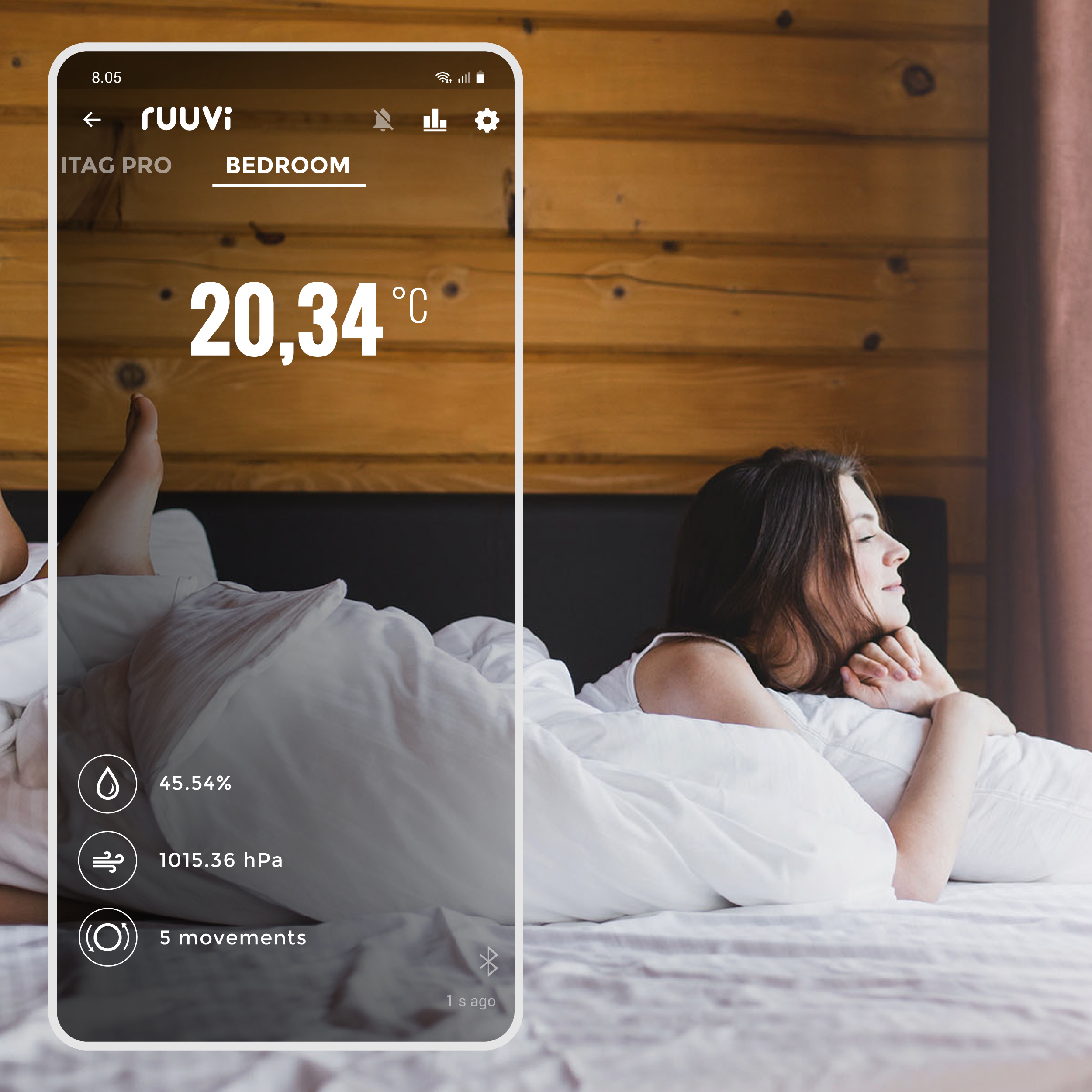

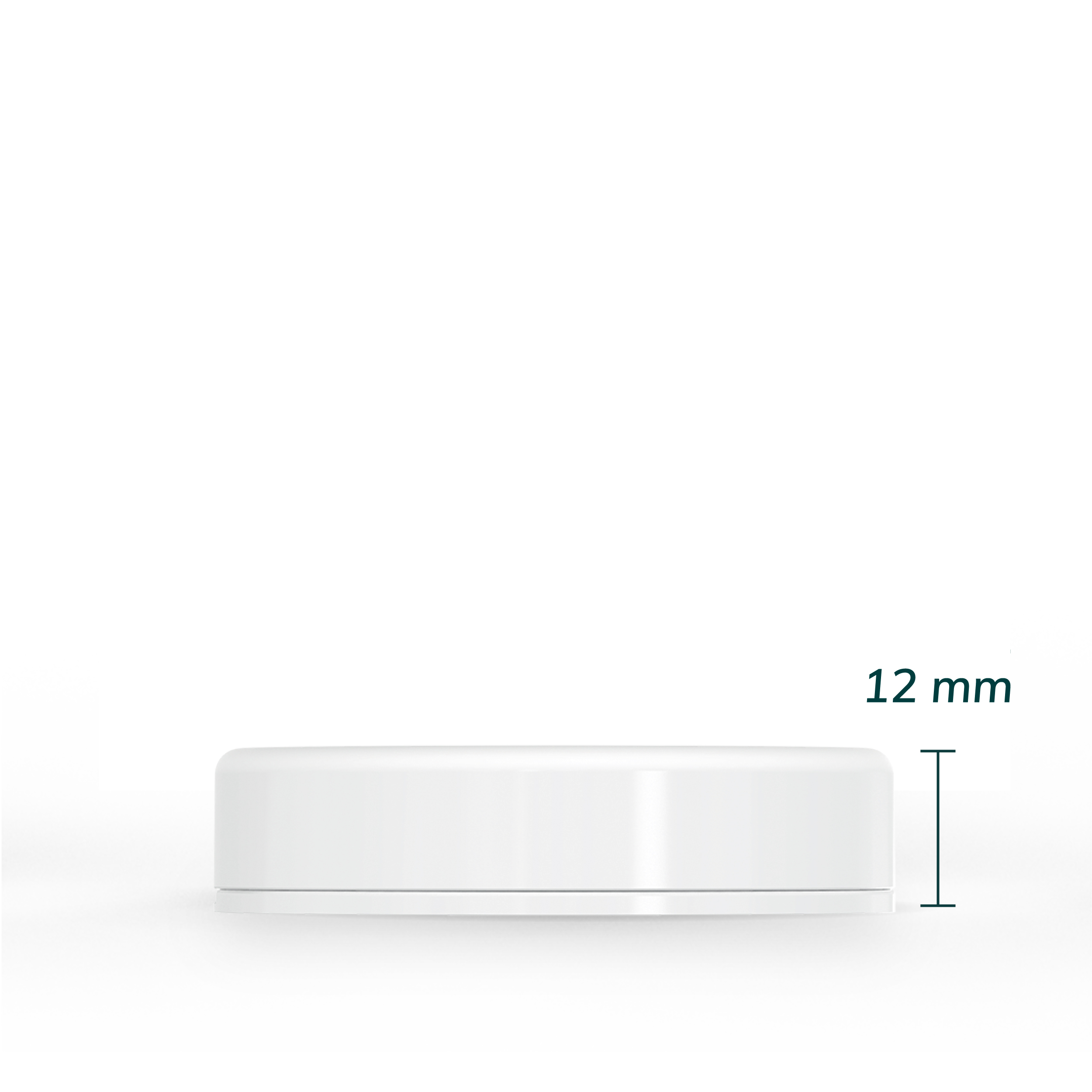
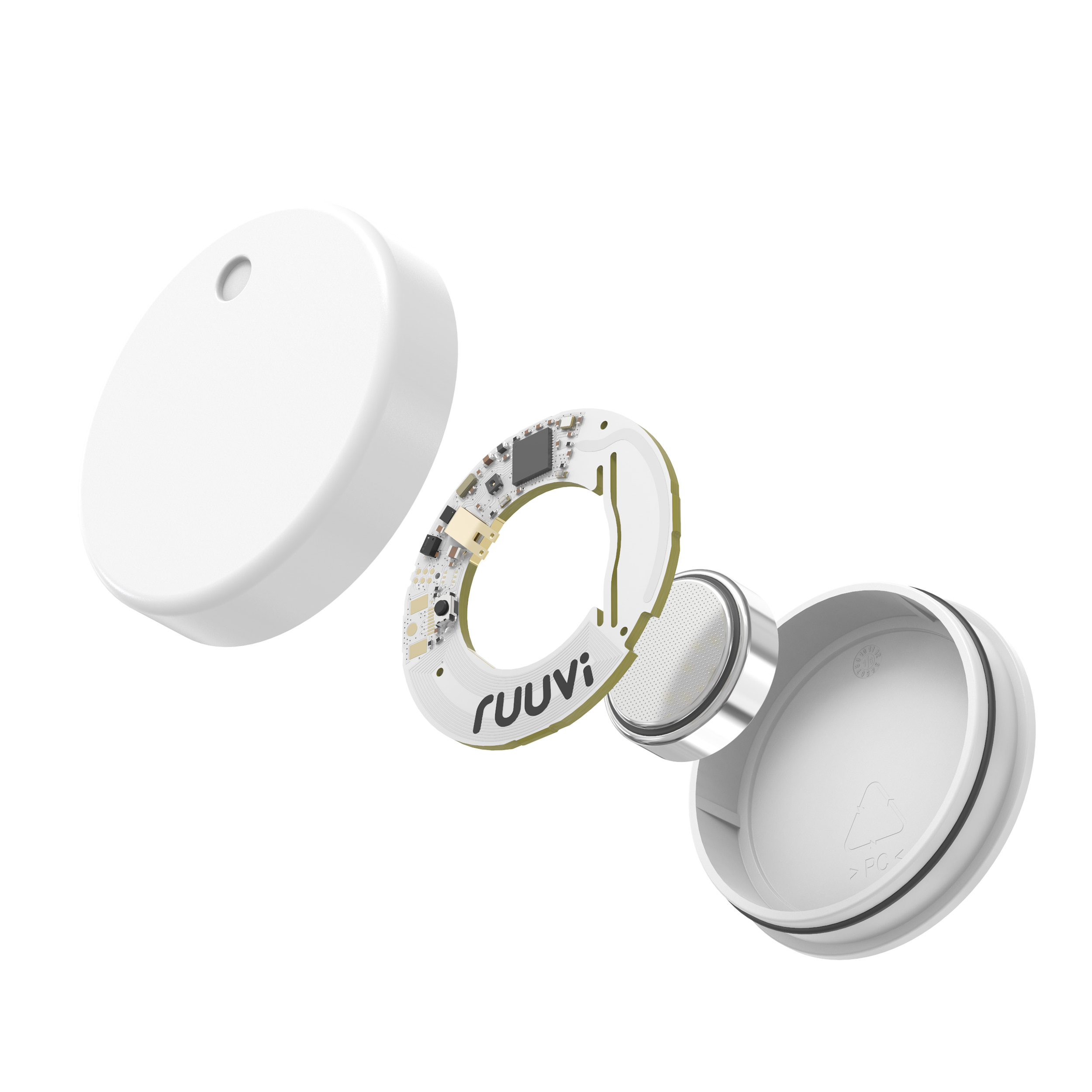
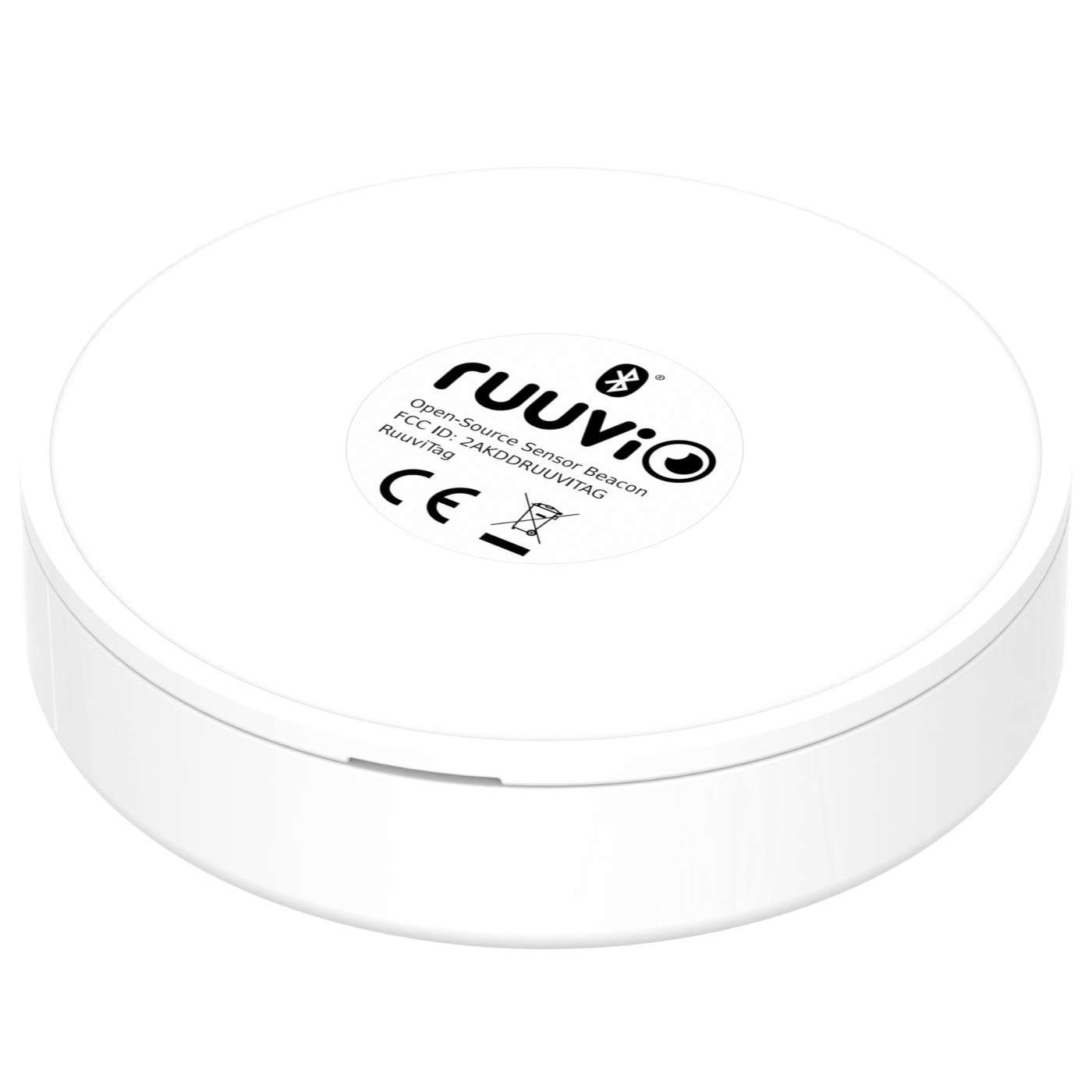
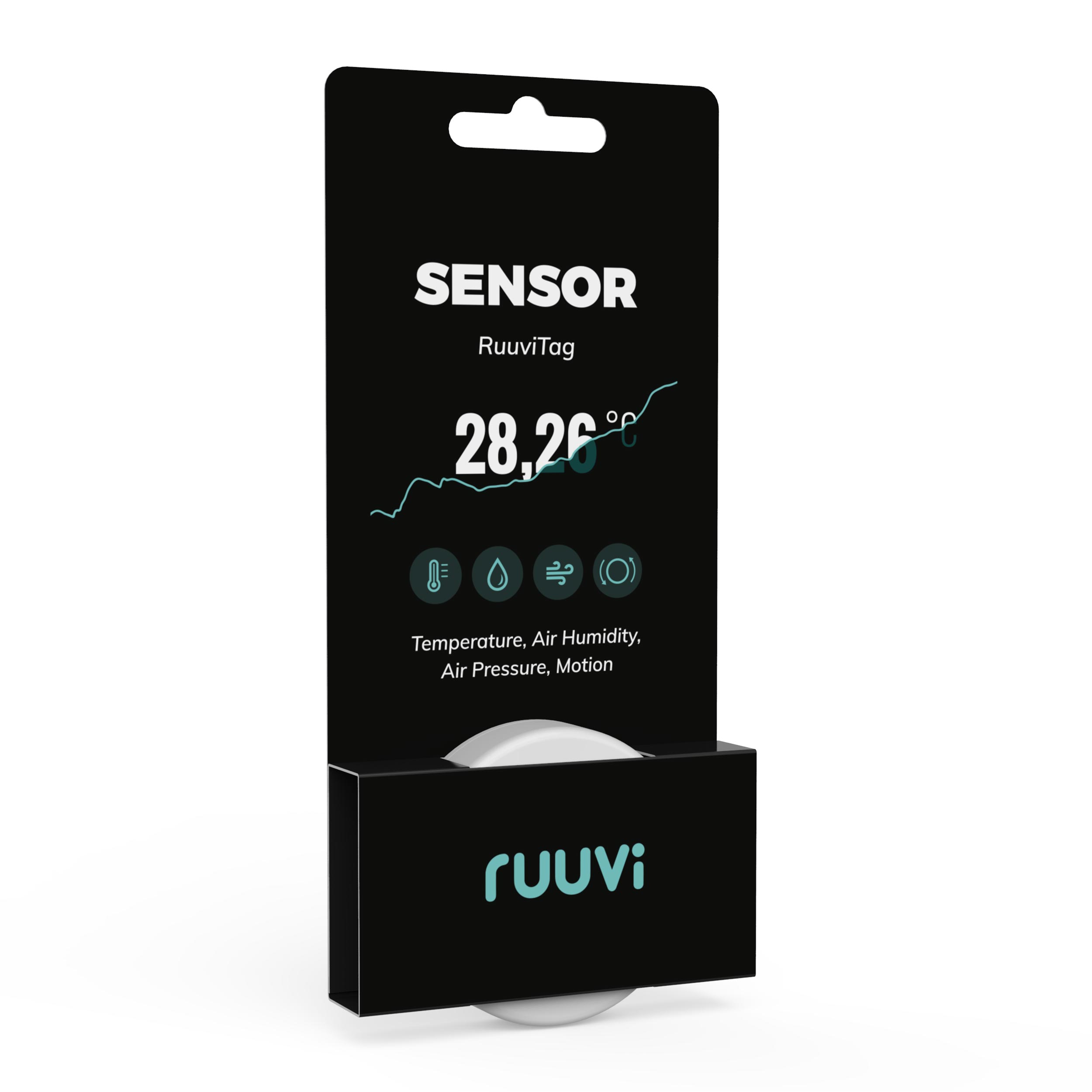
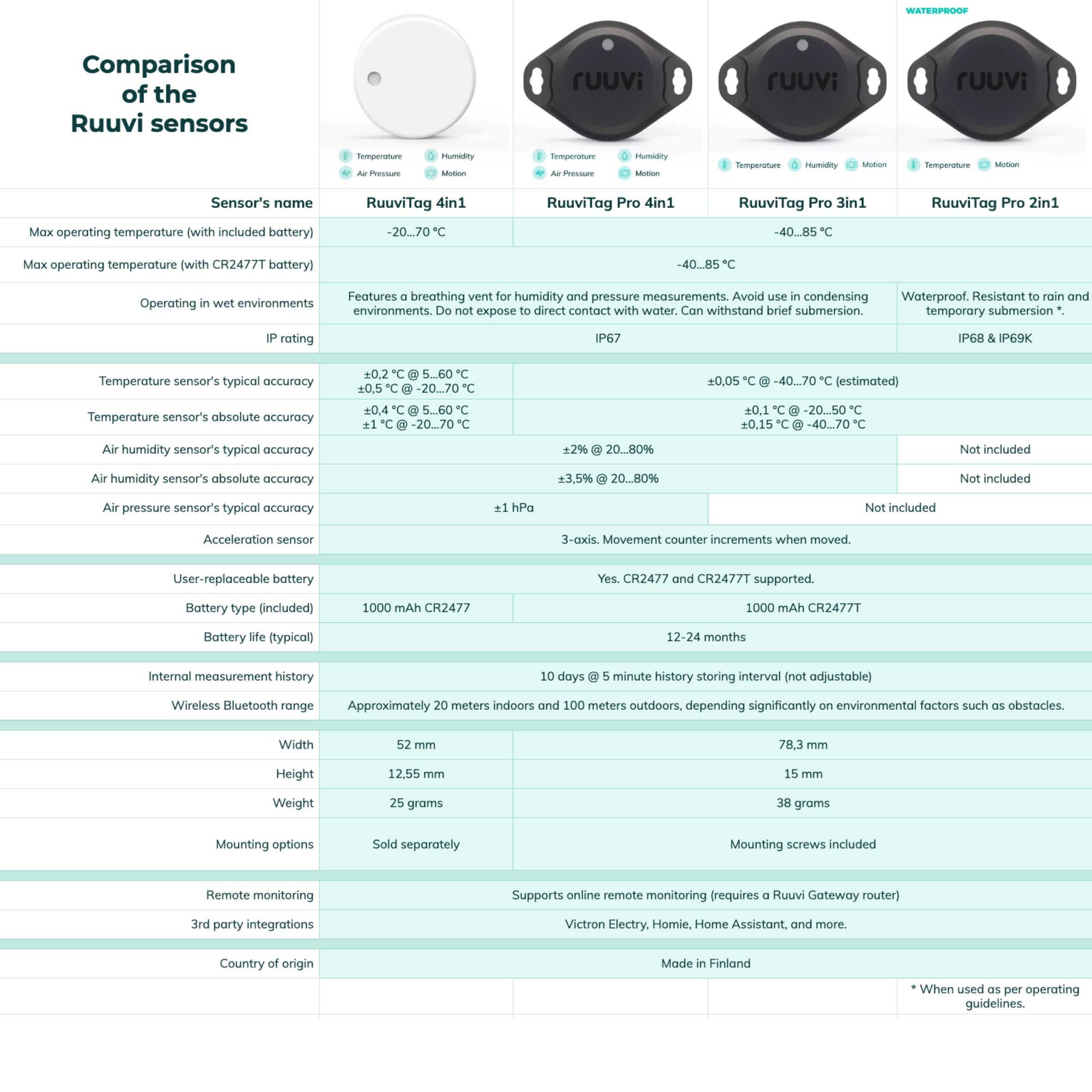
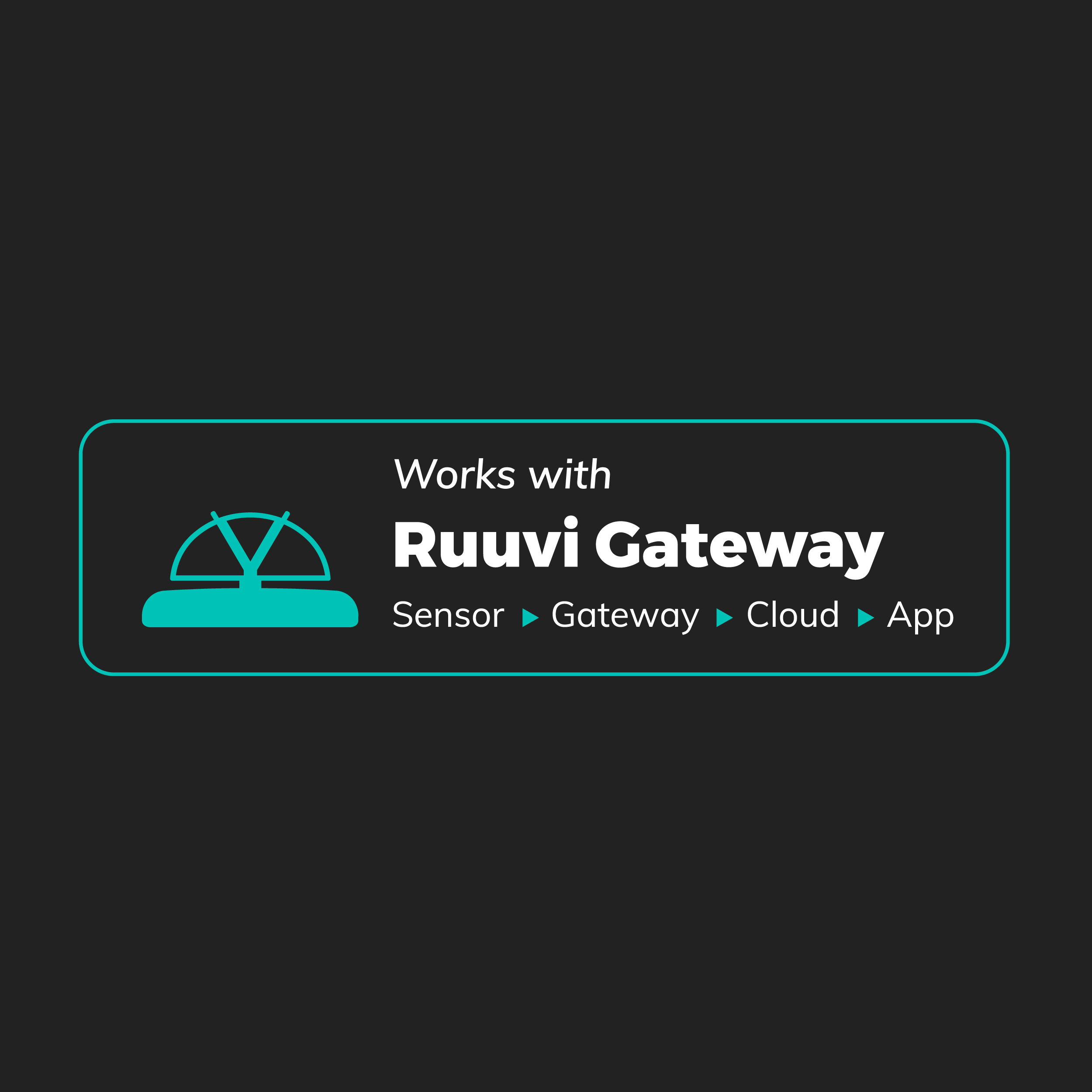
Easy to use!
I have been a loyal user of the RUUVI products for years, and I couldn’t be happier with their quality and performance. Recently, when I faced an issue on my last shopping, the company’s support team went above and beyond to help me. Their dedication and personal follow-up truly impressed me and reinforced why I trust and recommend RUUVI so highly. If you want a reliable and innovative product, look no further than RUUVI. Highly recommended!
A tremendous little sensor that just works. The data it provides is consistently reliable, and the battery life has been excellent. I now have several of them dotted around the house — and also in the motorhome — and they’ve all been rock-solid. Whether I’m checking temperature, humidity, or movement, they report instantly and have never let me down. A simple, dependable sensor that does exactly what it promises.